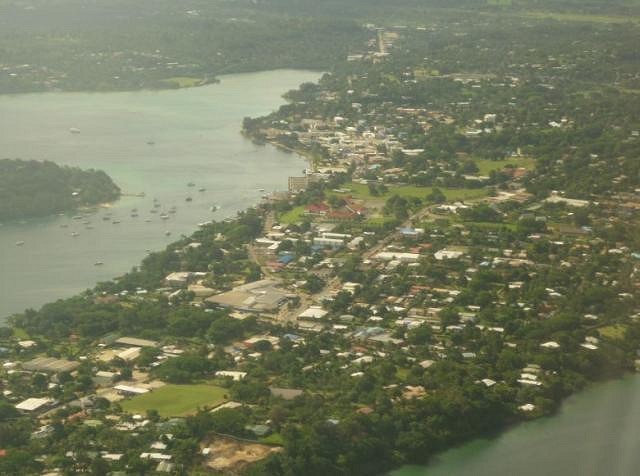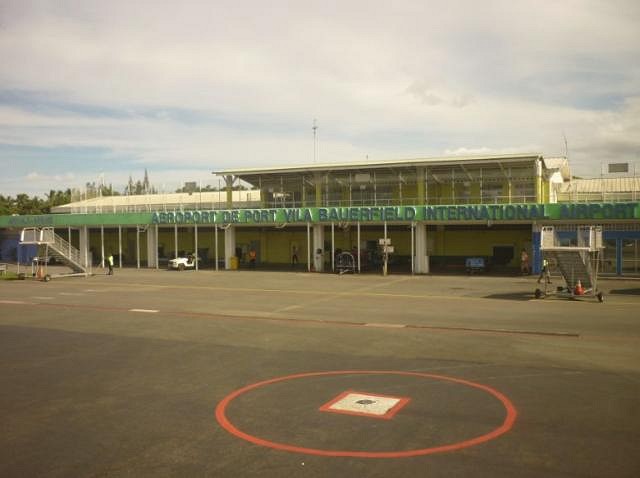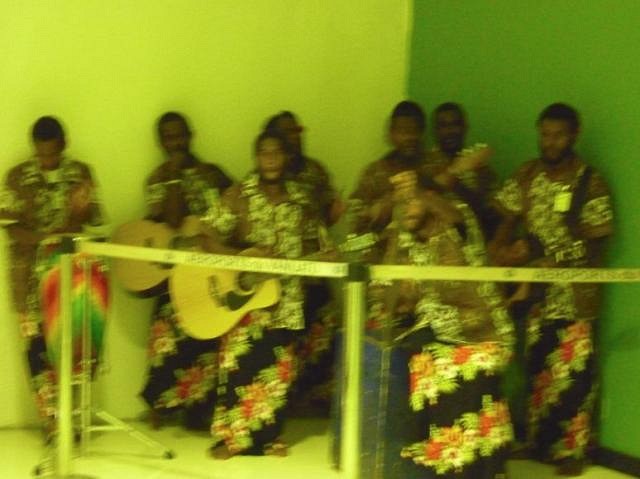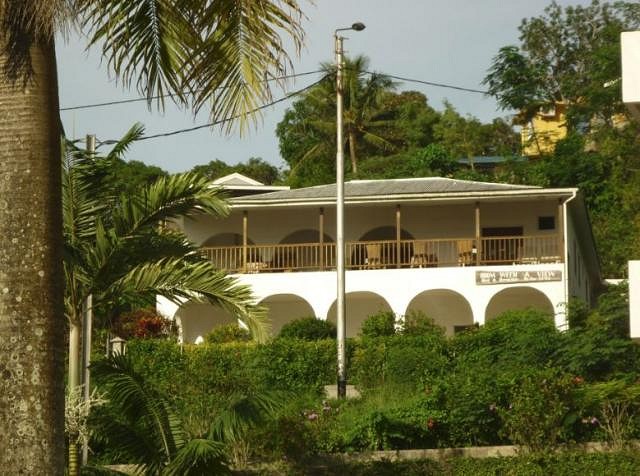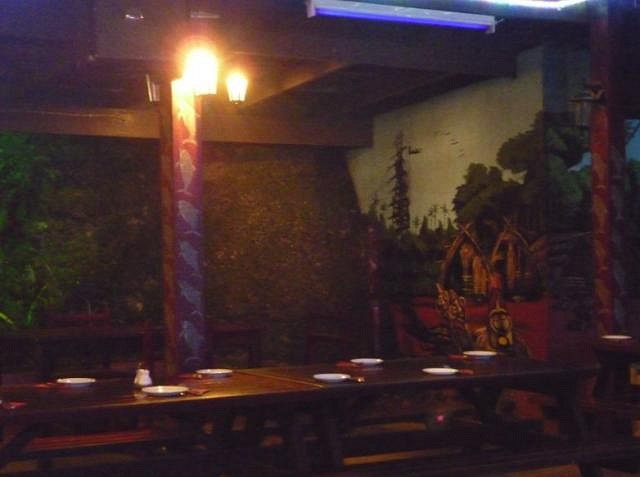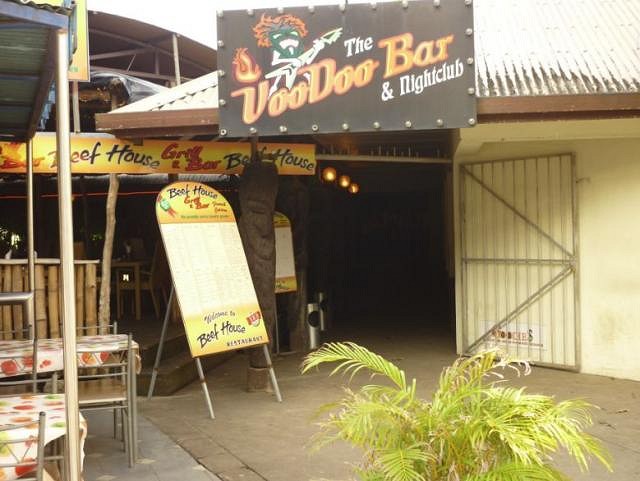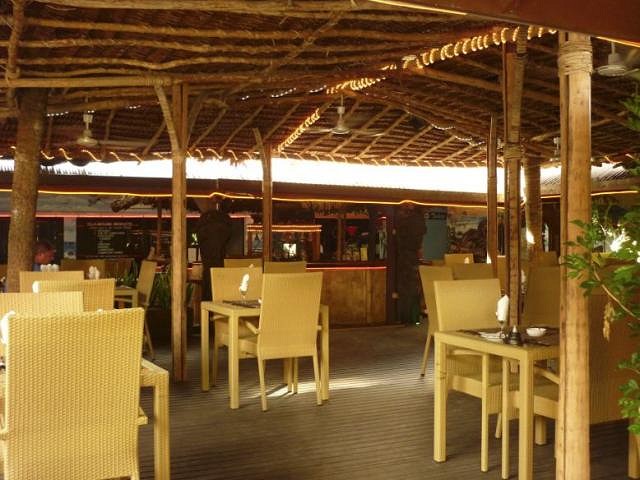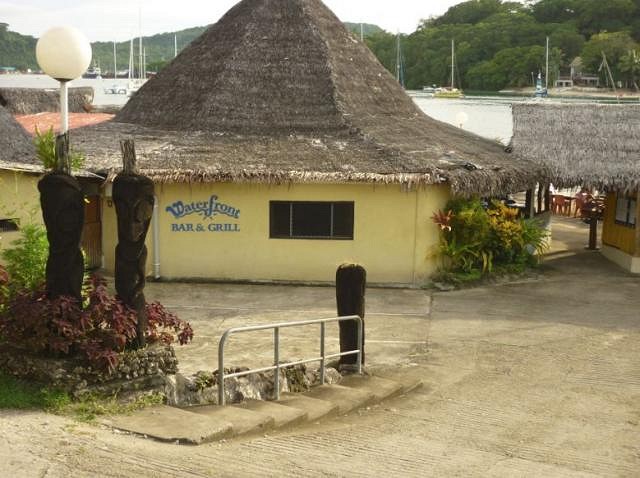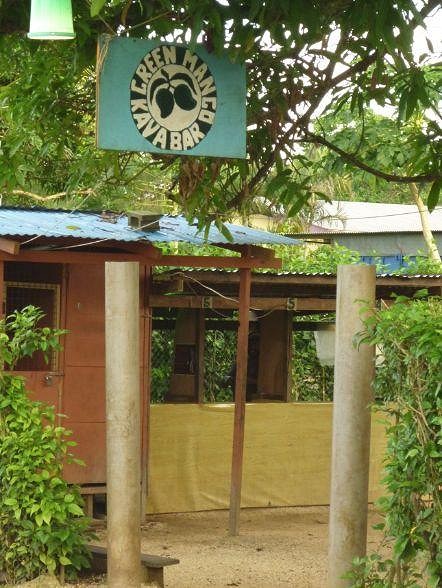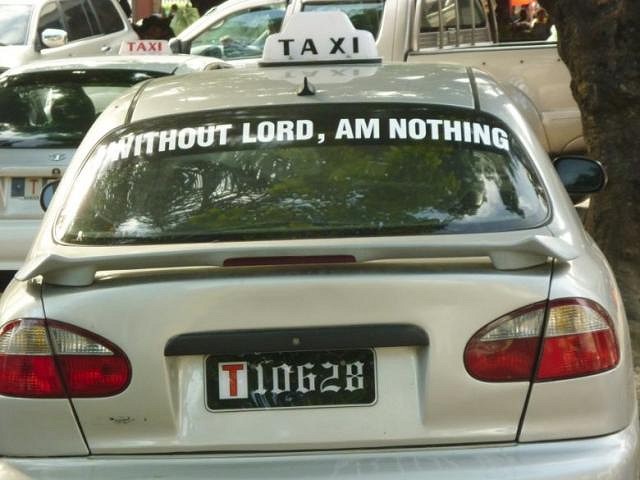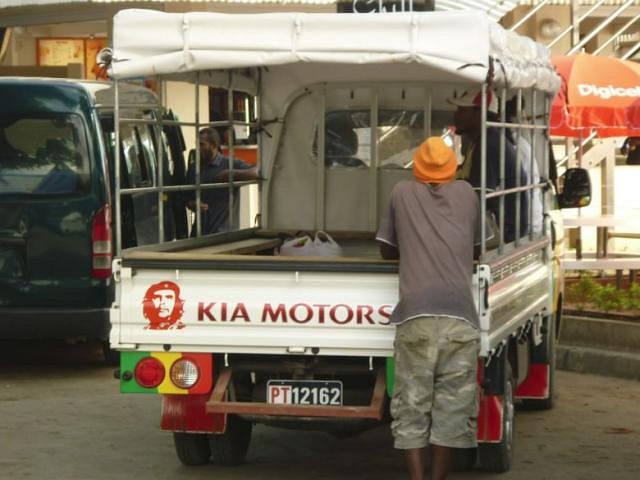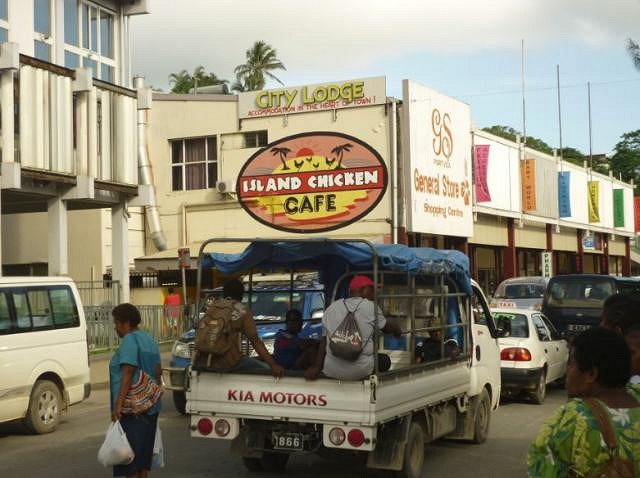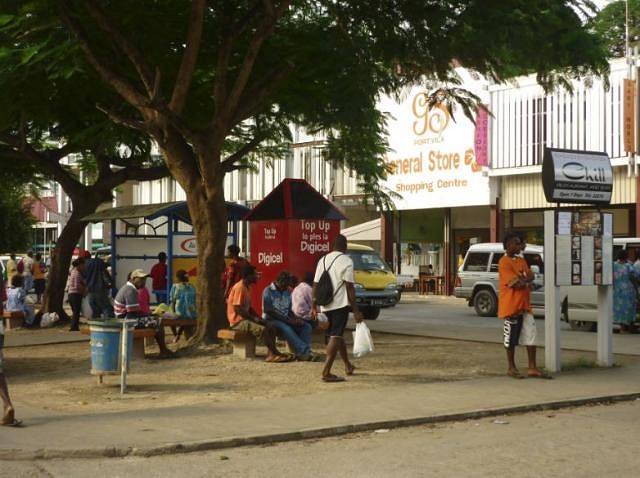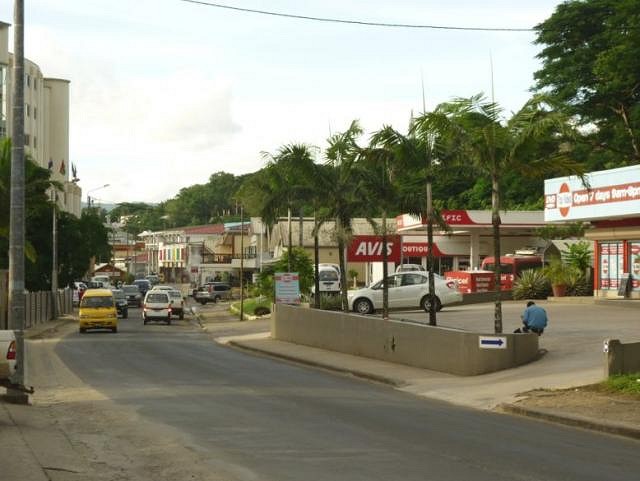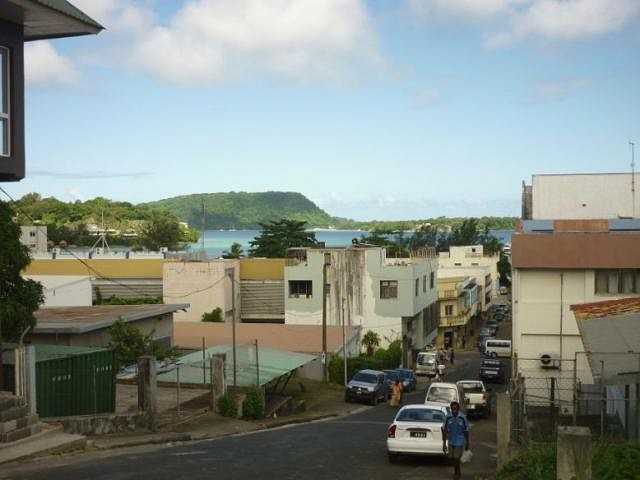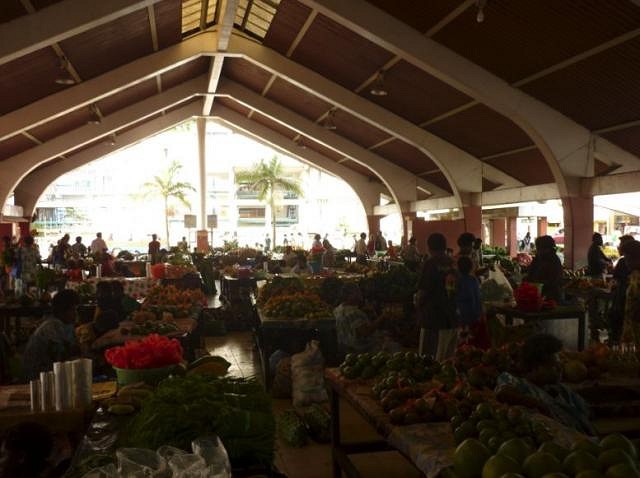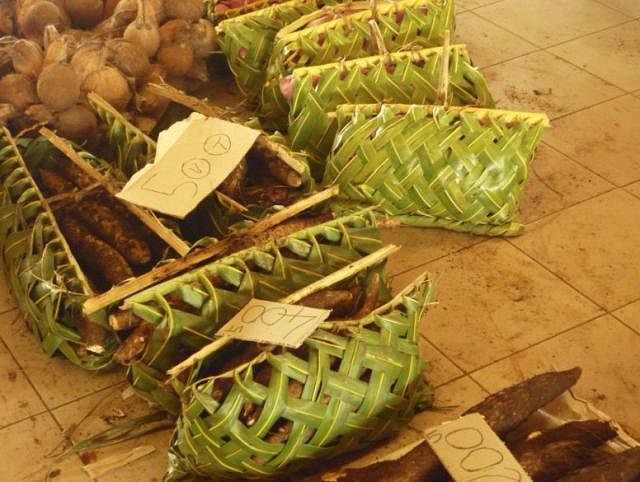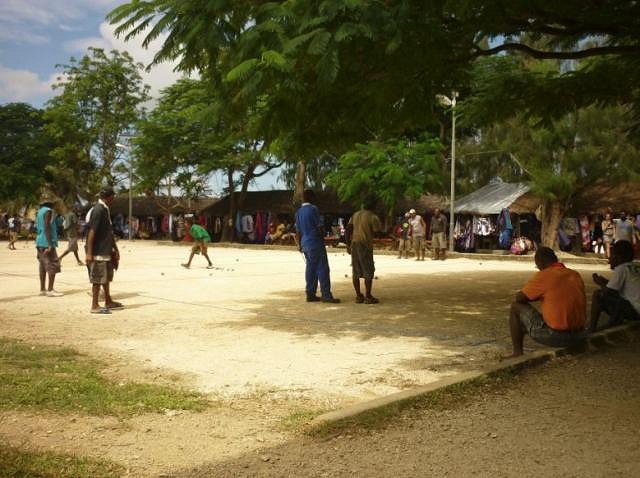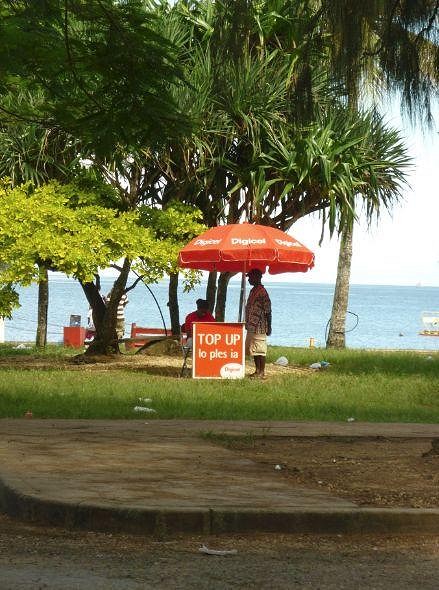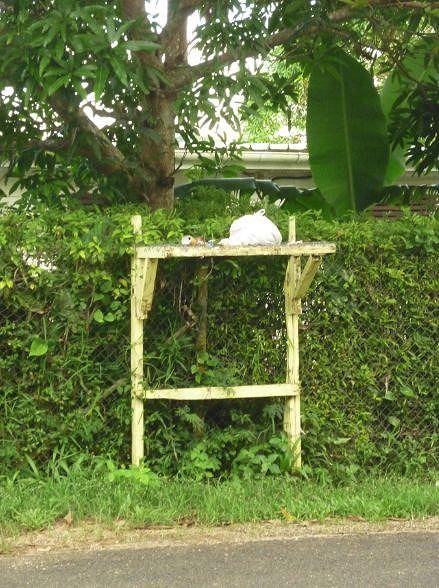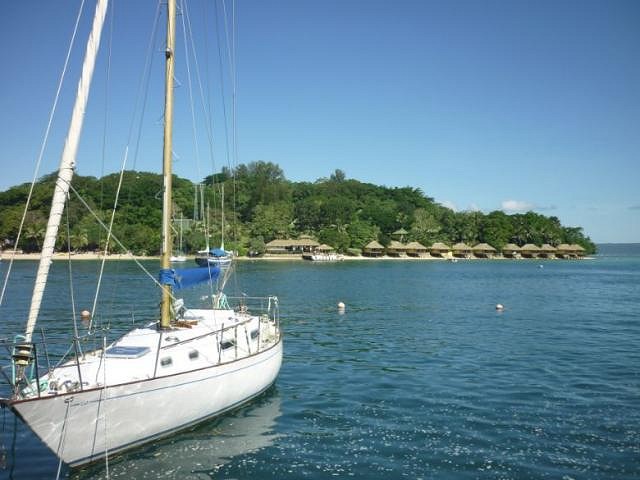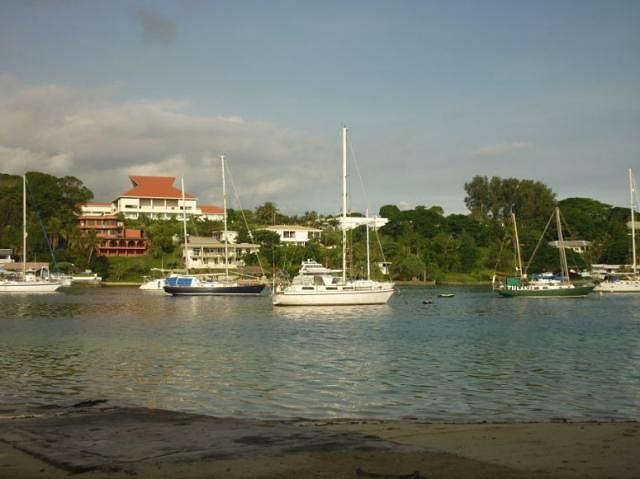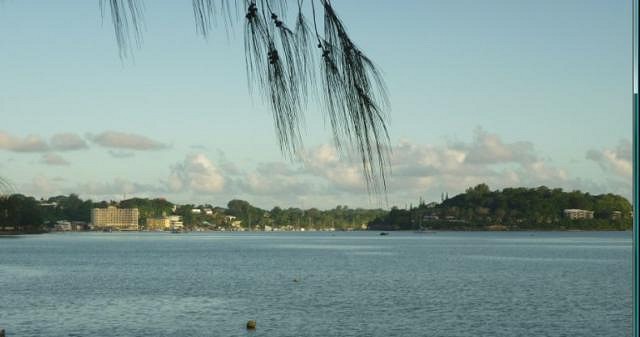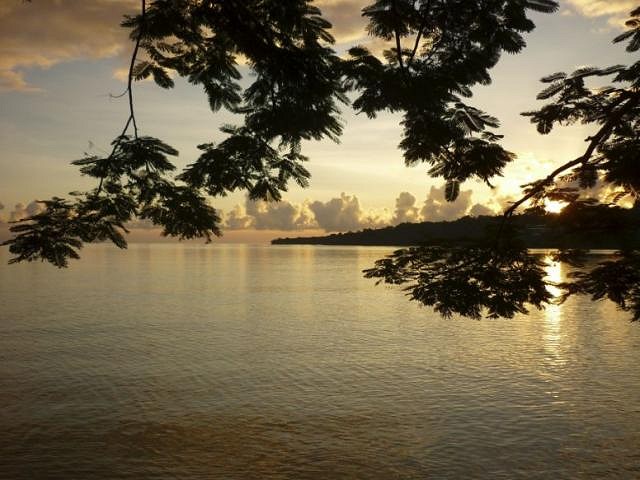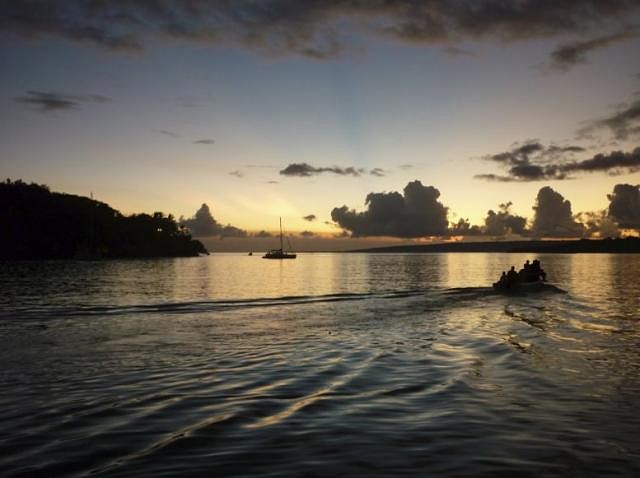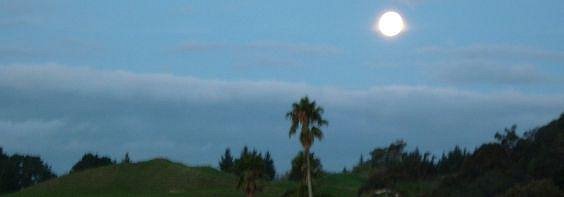Tiki Central / Tiki Travel / Club Nouméa's Tiki Tour of Vanuatu
Post #594450 by Club Nouméa on Tue, Jun 21, 2011 7:51 AM
|
CN
Club Nouméa
Posted
posted
on
Tue, Jun 21, 2011 7:51 AM
Part 3: A Stroll Around Port Vila
First a general aerial shot to get you oriented: The straight road you can see at the top centre is the Walter Lini Highway (named after Vanuatu's first Prime Minister, who was the leader of the Vanua'aku Pati), which is the main road from the airport. The expanse of water to the left is Vila Bay, with Iririki Island on the left edge of the photo. The expanse of water in the right bottom hand corner is Erakor Lagoon. The large building complex with the red roofs in the centre of the photo is the Parliament, and above it, on the other side of the fields, is the downtown area.
Bauerfield International Airport is one of Vanuatu's two international airports (the other one is at Luganville, on the island of Espiritu Santo). It is named after Lieutenant Commander Harry F. Bauer, a US Navy officer who died in the Guadalcanal campaign in 1942 ( http://en.wikipedia.org/wiki/Harry_F._Bauer ).
The slightly blurry string band at the airport that greeted my flight from Auckland.
The view from the balcony of my hotel (Room With A View), a French colonial-style building dating from the days of the New Hebrides:
My "local": The Flaming Bull Steakhouse:
More details here: http://www.tikicentral.com/viewtopic.php?topic=39866&forum=2&hilite=Flaming%20Bull Another drinking and dining option right downtown (although the Flaming Bull is definitely more atmospheric):
Then there is the Waterfront Bar & Grill:
Or, if you like your drinking rough and ready, and you want to hang out with the locals, you could try the Green Mango Kava Bar:
Let me know how it goes, and I accept no liability for any losses or damage you may sustain. Any foreigner wandering the streets of Port Vila will soon have a close encounter of an unexpected kind. Mine occurred on Captain Cook Avenue on the afternoon of my arrival, after having just scared off a racist stray dog (I assume he was racist because he decided to try and bite me, and I was the only white fella in the street at the time...), but that incident was merely coincidental. Having just regained my composure, my heart skipped a beat when a minibus spotted me, veered over to my side of the road and slammed on its brakes, missing me by a few inches. The driver leaned out the window and asked: "You wanna ride?" I refrained from requesting cardiac resuscitation, and instead simply replied "No tankyu!". Any white person who walks more than 25 metres in a straight line on the streets of Vila will attract multitudinous offers of rides, followed by looks of stunned disbelief when you wave them on their way as you head off into the midday sun, sharing the street with the local mad dogs... Here is what public transport looks like in Port Vila:
I don't know about you, but taxi drivers who trust in God rather than relying on their own skills make me very nervous... Taxis are relatively easy to spot, but not all of them have the familiar fittings on the top of the roof. If in doubt, look for the "T" number plate - all registered taxis must have these.
The other common plate is "PT" which stands for "public transport". If you see one of these buses, it works just like a taxi; hail the driver from the curb, and the driver will take you wherever you want to go. There are no bus routes in Vila. Downtown destinations cost 100 Vatu; further out of town costs 200 Vatu. Then there are the black market operators. This vehicle is clearly operating as public transport, but it has its number plate obscured:
New Yorkers would love Port Vila - it is taxi heaven. Some shots of downtown:
The annual waiters' race along the waterfront. It was only 9 am and it was already too hot for running:
Most of the downtown buildings are low-rise generic French colonial-style commercial buildings from the 1950s to the 1970s, with apartments on the upper floor - the sort of structures you can see anywhere in the French-speaking world from Nouméa all the way to Dakar. Downtown buildings are typically two or three storeys high at most, with the exception of a few more recent hotels and apartments right on the waterfront. The central market:
Cassava (manioc) in the foreground. There are set prices at the market - haggling is frowned upon, but the prices are generally fair, so there is no real need to bargain. Locals playing pétanque down near the waterfront:
The buildings behind them are part of the crafts market - a good place to go if you want fabrics, carvings or other handicrafts. Waterfront mobile phone kiosque with litter:
Ni-Vans have no concept of litter - traditionally they are used to the unwanted organic items that they discard simply biodegrading in the extremely moist environment, and they indiscriminately try to apply the same approach to plastic bags, bottles, etc. There is however a municipal waste disposal service in Port Vila:
These platforms outside homes are used for leaving rubbish bags on for collection by the rubbish trucks - they are raised to deter stray dogs and rats, but are ineffectual against birds, cockroaches and ants. To close, some shots of Vila Bay:
I had to include at least one clichéd tourist shot - the island in the background is Iririki Island. In the days of the New Hebrides, the British Resident (see Part 1) lived there and used to be ferried across in a motorboat to the mainland every morning to do his daily business of administering the islands with his French counterpart. The island is now the site of a swanky tourist development. A view from Iririki Island, looking back at the mainland:
A view of downtown and Iririki Island from Malpoa, a suburb north of Vila Bay:
Vila Bay at dusk, looking towards Malpoa peninsula:
The ferry heading off to Malpoa:
CN
[ Edited by: Club Nouméa 2011-06-21 07:55 ] |

